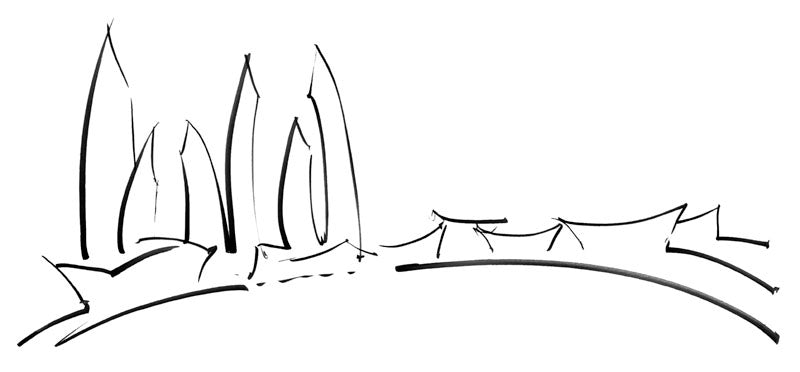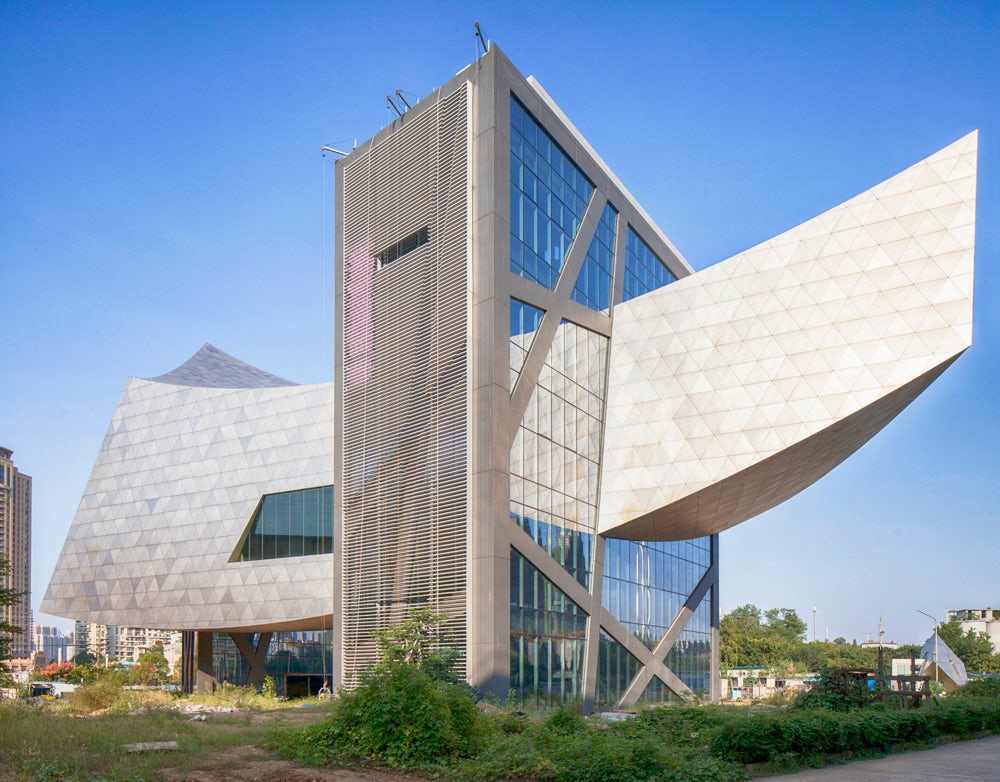Sign up to be informed when the next One Drawing Challenge competition opens for submissions. Be sure to check out the incredible work by this year’s finalists.
When looking through the drawing sets of most architects, you will find tools associated with precision: mechanical pencils with wafer-thin graphite tips, razor-sharp steel rulers and French curves for those ornate details. Sometimes, though, the creative spark for a project emerges with the use of mediums that are inherently inaccurate. Whether from the free-flowing lines of a charcoal stick or the thick strokes of a marker pen, the initial sketch frequently captures the visceral power of architecture better than a blueprint ever could.

Daniel Libeskind’s sketch for the Royal Ontario Museum, Toronto, Canada
So the story goes, Polish-American architect Daniel Libeskind was eating dinner in a restaurant when he sketched a design for the Royal Ontario Museum on a paper napkin. This impromptu burst of creativity culminated in the iconic Michael Lee-Chin Crystal, and the sketch in question is characteristic of Libeskind’s lose, expressive style at the initial stages of a project.
Using any medium available to him at the time, Libeskind’s first design drawings are less about a building’s physical form and more about the story he is aiming to tell: the poetic narrative expressed through line and shade is key to the architect’s process, and it has resulted in many of his most iconic works to date. Here, we present six more of the most emotive drawings produced by one the world’s foremost deconstructivists, and the buildings they inspired:


Jewish Museum Berlin, Berlin, Germany
Back in 1989, Libeskind let loose with pencils in leaden tones and a fierce, fire-colored orange, attempting to encapsulate the complex and often traumatic history of Jews across the globe. The emotion present within these jagged lines led to the architect’s winning entry for the competition to design the Jewish Museum in Germany’s capital, and the snaking form of this iconic building is remarkably reminiscent of Libeskind’s original iteration.


18.36.54 House, Connecticut, United States
In a departure from his usual pen work, Libeskind broke out the watercolors to help define the angular volumes and fragmented language of this private residence in rural Connecticut. The sketch emphasizes a distinctive, deconstructed aesthetic rarely seen on a domestic scale. The resulting building is a cacophony of folding planes, points and edges wrapped in shimmering copper panels.


Imperial War Museum North, Manchester, United Kingdom
Libeskind’s composition of intertwined pen strokes is given a three-dimensional quality with the addition of cross-hatching to imply depth and surface reflectivity. This sketch appears highly abstract, but it actually constitutes a remarkably accurate representation of the fragmented Imperial War Museum North — a collection of inhabitable shards reminiscent of a broken planet shattered by global conflicts.


Reflections at Keppel Bay, Keppel Bay, Singapore
Libeskind kept things simple with this sketch for the luxurious Reflections development at the entrance of Keppel Bay’s historic harbor. Evoking the sails of yachts on the water, the architect’s sketch illustrates the distinctive silhouette that adds an iconic edge to this multiunit housing scheme. The curving towers of glass are composed so that no two adjacent apartments have exactly the same outlook or layout, offering unique homes with a sense of refinement and exclusivity.


Zhang Zhidong and Modern Industrial Museum, Wuhan, China
Libeskind collated a busy collection of sketches to illustrate the multifaceted ideas at work in the formulation of this striking museum in Eastern China, combining several narratives within the building and surrounding landscape. Currently under construction, the building celebrates the work of Zhang Zhidong — a 19th-century leader who was a catalyst for modernization in Wuhan — and the history of the region’s booming steel industry.


© DBOX
Ground Zero Masterplan, New York, United States
A sketch soaked with powerful symbolism, Libeskind’s poetic plan for Ground Zero in New York blends contextual moves — the path of the sun informs the position of buildings — with metaphors associated with reflection, remembrance and hope for the future. The Statue of Liberty is visible in the bottom left corner, her outstretched arm echoed by the offset spire of the crystalline World Trade Center tower, while Michael Arad’s reflecting pools are shown within the footprints of Yamasaki’s original Twin Towers.
Sign up to be informed when the next One Drawing Challenge competition opens for submissions. Be sure to check out the incredible work by this year’s finalists.
All sketches and drawings © Studio Libeskind









